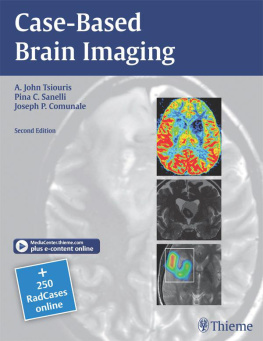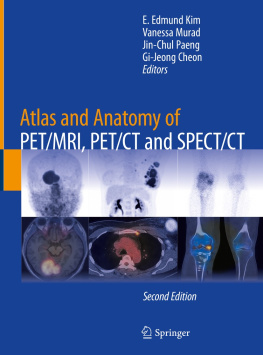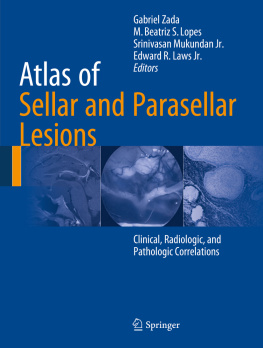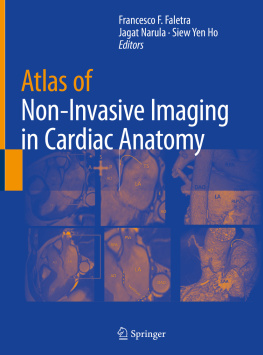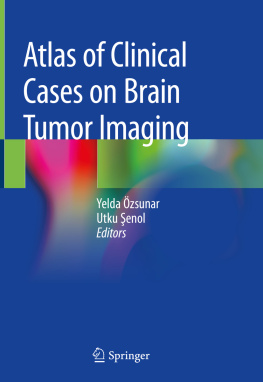1. Brain: Introduction
The Brain section of this book is the largest and covers a combination of normal variants, normal anatomy, and artifacts that can mimic disease. Although there is an attempt to organize such normal variations by region or anatomic structure, such a classification is inherently problematic because some normal variants can be in multiple locations (e.g., choroid plexus or dilated perivascular spaces), while some commonly encountered artifacts can occur anywhere in the brain (e.g., flow voids). Thus, this section of the book is generally organized starting from inferiorly at the skull base to more superiorly, while normal variants that can occur anywhere in the brain are generally placed in the middle. Also, artifacts or magnetic resonance related sequence phenomena that may simulate disease are placed toward the end of this section.
Some basic terminology and abbreviations regarding standard sequences is necessary, since magnetic resonance imaging (MRI) manufacturers unfortunately have not adopted one standard for sequences outside of the routine ones such as T1-weighted images, T2-weighted images, fluid-attenuated inversion recovery (FLAIR), and diffusion-weighted images. Thus, standard terminology used throughout this section and the remainder of the book is described below.
1.1 Terminology
1.5 T and 3 T
1.5 Tesla and 3.0 Tesla MRI magnet field strengths
BFFE
Balance FFE (similar to CISS)
CECT
Contrast-enhanced computed tomography (CT)
CISS
Constructive interference in steady state, similar to T2WI, emphasizes cerebrospinal fluid hyperintensity
DWI
Diffusion-weighted image
FFE
Fast field echo (either T1- or T2-weighted)
FLAIR
Fluid-attenuated inversion recovery imaging
GE T2*WI
Gradient echo T2*-weighted imaging
IR
Inversion recovery imaging
T1IR
T1-weighted IR imaging
T2IR
T2-weighted IR imaging
MiniP
Minimum intensity projection
MIP
Maximum intensity projection
TOF MRA
Time-of-flight MRA
SWI
Susceptibility-weighted imaging
2. Cerebellar Tonsillar Ectopia
The cerebellar tonsils have a range of normal positioning relative to the foramen magnum , and the range of normal particularly depends on age, whereas the degree of descent/position (in millimeters) of the tonsils has a normal distribution relative to age. Traditionally defined, a Chiari 1 malformation was simply defined as a hindbrain and skull anomaly consisting of tonsillar herniation below the foramen magnum; however, it was later defined more by the neuroradiologic criteria of descent of the tonsils 5 mm or greater below the foramen magnum with symptoms of tussive headache (i.e., with coughing). In a seminal work by Barkovich and coworkers in 1986 that consisted of over 200 normal patients and 25 with Chiari 1 malformations, the mean position of the tonsils in the normal group was 1 mm above the foramen magnum (range of 8 mm above to 5 mm below). Meanwhile, in Chiari 1 patients, the mean tonsillar descent was 13 mm below the foramen magnum (range of 329 mm below). The authors found that a tonsillar position of 2 mm or greater below the foramen magnum had a sensitivity of 100 % and a specificity of 98.5 % for predicting symptomatic patients. Later, it was shown that the most consistent finding in Chiari 1 patients was tonsillar herniation (i.e., downward descent with mass effect) of 5 mm or more in adult patients, while patients with tonsils 35 mm below the foramen magnum might be asymptomatic but did not exclude that diagnosis. Notably, larger prospective studies of the asymptomatic general population have demonstrated that tonsillar ectopia (i.e., descent without clear mass effect) of less than 5 mm is present in 0.51.0 % of the adult population as an incidental finding; however, it is not certain whether such patients with less than 5 mm of tonsillar ectopia eventually develop symptoms, and the degree of compression of the cervicomedullary junction is not well described. Hence the need for correlation with the presence of clinical symptoms. Other factors that may affect the tonsillar position include possible normal or slight differences in the degree of ectopia from side to side and that the degree of ectopia may change slightly even with the cardiac cycle (up to 0.40.5 mm in controls and even to a greater degree in Chiari 1 patients).
To make it more challenging, the pediatric range of tonsillar ascent/descent may be wider, probably caused by variation in the pediatric skull base and upper cervical spine; this may be related to the variable size of the pediatric foramen magnum, the variable distance between the foramen magnum and the arches of C1 and C2, and variable patterns of ossification. Thus, a degree of tonsillar ectopia even greater than 5 mm may be tolerated without the patient developing true herniation (compression) or symptoms, and such descent can improve or resolve over time. Interestingly, following the neonatal period, the tonsils may descend further during childhood, typically reaching their lowest point between 5 and 15 years age; however, this author has noted that in some juvenile patients the tonsils may ascend as well, even leading to some cases of tonsillar ectopia (or herniation!) that spontaneously resolve.
Therefore, the current thinking varies by author, but a few simple rules may help to define symptomatic patients. First, the term tonsillar herniation in children should be considered only when the degree of descent is greater than 5 mm below the foramen magnum. In adults, neither tonsillar herniation nor ectopia should be considered if the degree of descent is less than 2 mm. The mildly ectopic, benign ectopia, or borderline herniation range is 35 mm of descent in adults. In such patients, appropriate clinical symptoms and potentially accessory imaging (such as a cerebrospinal fluid [CSF] flow study) may help to define associated abnormal flow around the tonsils. A common-sense rule that may help to identify potentially symptomatic patients in this borderline range is whether or not the cervicomedullary junction is truly compressed by the tonsils (i.e., truly fitting the definition of herniation, in which the bright CSF on T2WI surrounding the junction is effaced).
Again, by definition, a Chiari 1 malformation is comprised of cerebellar tonsillar herniation below the foramen magnum of at least 5 mm, typically compressing the cervicomedullary junction if the patient is symptomatic. It is important to mention that a cervical or cervicomedullar syrinx (i.e., syringomyelia) may be present in 2025 % of Chiari 1 patients. A related anomaly may be the so-called Chiari 1.5 malformation (brainstem herniation through the foramen magnum). A Chiari 2 malformation typically consists of a small posterior fossa, tonsillar herniation (with or without brainstem kinking or syrinx), and a spinal myelomeningocele; numerous other congenital brain malformations may be associated. A Chiari III malformation is quite rare and consists of a cervico-occipital encephalocele (Figs. ).







